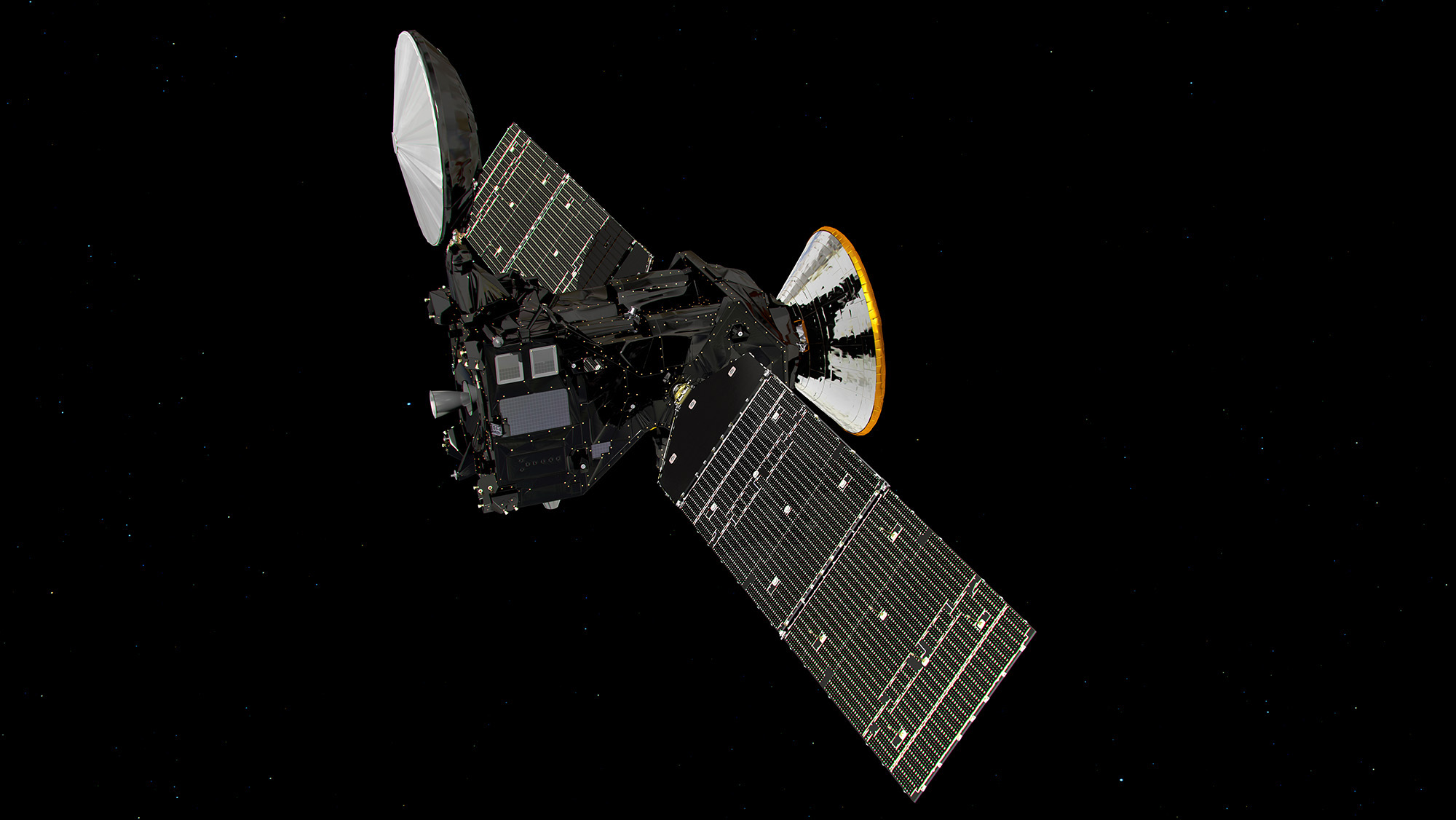
The European Space Agency's (ESA) ExoMars spacecraft has performed its first critical deep-space maneuver since launching toward the Red Planet on March 14.
ExoMars fired up its main engine for nearly an hour on July 28, fine-tuning the probe's trajectory ahead of a planned Oct. 19 arrival at the Red Planet, ESA officials said.
"The engine provides about the same force as that needed to lift a 45-kilogram [100 lbs.] weight in a fitness studio, and it ran for about 52 minutes, so that's quite a significant push," deputy spacecraft operations manager Silvia Sangiorgi said in a statement.
The maneuver came after brief test burns on July 18 and July 21. The current plan calls for three more engine firings on the way to Mars: one each on Aug. 11, Sept. 19 and Oct. 14, ESA officials said.
The ExoMars spacecraft consists of the Trace Gas Orbiter (TGO) and a landing demonstrator called Schiaparelli. The pair are scheduled to separate on Oct. 16; three days later, TGO will begin circling Mars, while Schiaparelli will touch down softly on the planet's surface.
TGO's main job involves hunting for rare gases in the Red Planet's atmosphere, especially methane, which may be a sign of Martian life. (The vast majority of methane in Earth's air was produced by microbes.) The orbiter is scheduled to begin its five-year mission in December 2017, after slowly making its way down to its final science orbit.
Schiaparelli will gather some environmental data on the Martian surface, but its main job is to test out the technology needed to land the life-hunting ExoMars rover on the Red Planet. That robot is currently slated to launch in 2020, the same year that NASA will send its next rover toward Mars.
Breaking space news, the latest updates on rocket launches, skywatching events and more!
ESA leads the ExoMars program, with considerable support from Russia; the Russian federal space agency, known as Roscosmos, is ESA's main partner on the project.
Follow Mike Wall on Twitter @michaeldwall and Google+. Follow us @Spacedotcom, Facebook or Google+. Originally published on Space.com.
Join our Space Forums to keep talking space on the latest missions, night sky and more! And if you have a news tip, correction or comment, let us know at: community@space.com.

Michael Wall is a Senior Space Writer with Space.com and joined the team in 2010. He primarily covers exoplanets, spaceflight and military space, but has been known to dabble in the space art beat. His book about the search for alien life, "Out There," was published on Nov. 13, 2018. Before becoming a science writer, Michael worked as a herpetologist and wildlife biologist. He has a Ph.D. in evolutionary biology from the University of Sydney, Australia, a bachelor's degree from the University of Arizona, and a graduate certificate in science writing from the University of California, Santa Cruz. To find out what his latest project is, you can follow Michael on Twitter.
